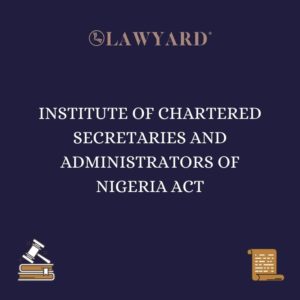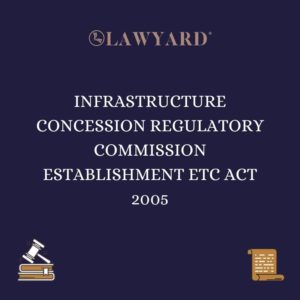Covid-19: NJC Issues Guidelines for Court Sittings and Related Matters
Lawyard is a legal media and services platform that provides…
Sequel to the submission of the Report of the 10-Man Committee set up to develop a template for Court sittings, the Chief Justice of Nigeria (“CJN“) on Thursday issued Guidelines for Court sittings and related matters in the Covid-19 period to all Heads of Courts.
The CJN’s statement, and the Guidelines, as published by the National Judicial Council, is reproduced below:
To: All Heads of Courts,
Federal and States Judiciaries.
RE: NATIONAL JUDICIAL COUNCIL COVID-19 POLICY REPORT:
GUIDELINES FOR COURT SITTINGS AND RELATED MATTERS IN THE COVID-19 PERIOD
At its 91st Meeting held on the 22nd day of April, 2020, the National Judicial Council constituted a Committee to devise guidelines and measures to enable safe Court sittings during this challenging period of the Coronavirus Pandemic and areas of necessary cooperation with the Office of the Attorney-General of the Federation and others in meeting the challenges.
2. The Committee headed by the Hon. Justice Olabode Rhodes-Vivour, JSC, CFR, submitted the Report to me on Wednesday, the 6th day of May, 2020 with the Formulated Guidelines attached herewith.
3. All Heads of Courts are therefore to be guided by the attached Guidelines in adopting or formulating, Rules, Directives and Guidelines, as appropriate to the legal and material circumstances of their Courts, with a view to achieving the goal of safely delivering justice in these unprecedented challenging times.
4. Furthermore, I have directed the Judicial Information Technology Policy Committee (JITPCO), of the Council to urgently set-up a Helpdesk for Courts that may require handholding in adopting and utilizing the technological tools suggested in the guidelines. Reach them on 0809 999 1212 ad courts@courts.gov.ng.
5. In further entrenchment of Court Technology Solutions, State governments be implored to provide the resources for State Judiciaries to commence utilization of Nigerian Case Management System (NCMS). This electronic solution is already developed by the Council and the Supreme Court and Court of Appeal have commenced uploading their backlog of cases. I have directed the JITPCO to expand rollout beyond the Pilot Courts and extend to any State that is ready to take off and check all the boxes of the checklist of roll out requirements.
6. Service of processes and Hearing Notices have posed serious challenges resulting in delays. The National Judicial Council took on this and developed a Legal Mail Solutions to address that and enable a workable e-filling solution for our Courts. In the attached guidelines, the current practice is allowed to continue in order to avoid disruption. Heads of Courts and the Bar are however implored to encourage adoption of the Legal Mail so that the comprehensive solution is applied, once and for all times.
7. I have also directed the Secretary of the Council to liaise with the Attorney-General for assistance at resolution with relevant agencies of government, some existing challenges to the implementation of Council’s Information Technology Policy, like addressing the Skillset gap through employment and practicable compensation for such IT Staff as demanded by the prevalent sectoral practice.
8. All Heads of Courts are directed to bring the content of this Circular to the notice of all Stakeholders in justice administration, please.
Hon. Dr. Justice I. T. Muhammad, CFR
Chief Justice of Nigeria and Chairman
National Judicial Council.
NATIONAL JUDICIAL COUNCIL GUIDELINES FOR COURT SITTINGS AND RELATED MATTERS IN THE COVID-19 PERIOD
Introduction.
In the wake of COVID-19 pandemic, the National Judicial Council (“NJC” or “Council”) has published these Guidelines which Heads of Courts and respective judicial officers shall adopt for the conduct of the court’s business including the sitting of the courts. These guidelines do not replace or substitute for the respective Rules of Courts; they complement the Rules and make specific provisions that would guide justice administration for as long as COVID-19 pandemic shall subsist and possibly beyond.
These guidelines shall apply to all courts in the Federation, notably, the Federal and States Judiciaries. Heads of Court shall have primary responsibility for ensuring the compliance of the judicial officers over whom they superintend with the provisions of this guidelines it being the intention of Council that justice administration shall continue despite the challenges and glitches occasioned by the COVID-19 pandemic.
A. COURT PREMISES
1. Heads of Courts shall liaise with relevant security agencies to ensure that the entrances to court premises are well manned by security personnel and entry into the premises are regulated in a manner that guarantees and enforces the minimum 2-meter (6 feet) distance between persons as it relates to all entrants into the premises.
2. The Courts shall ensure that:
a. all security personnel who work in the court premises and in particular the security personnel who man the entrance(s) to the
court premises are well informed on COVID-19 including in particular, the methods of its spread, its basic symptoms (e.g. fever, dry cough, tiredness, etc.), how to prevent its spread, etc.; and
b. all security personnel including those that are attached to judicial officers and courtrooms are well kitted and supplied in particular and continuously with disposable gloves, facemasks and hand sanitizers/dispensers.
3. The following guidelines shall apply in regard to the admission of persons into the court premises:
a. The security personnel at the entrance of the court premises shall be equipped with temperature monitors for testing and determining the temperature of each visitor to the court premises. They should be trained in the use of the temperature monitors and the visitors must be shown their temperature readings on the monitors before their admission into the court premises.
b. Every person wishing to go into the court premises, without exception, shall be subjected to the temperature monitor reading for the determination of his or her body temperature. Anyone who refuses to submit himself or herself for the reading of his or her temperature shall be politely refused entry into the court premises and advised to leave the entrance immediately.
c. Heads of Courts should procure the advice of health experts on the temperature levels that warrant concern and be indicative of a person with fever(“high temperature threshold”).The security personnel at the court entrance(s)must be trained in that regard.
d. Any visitor to the court premises who has a high temperature, based on the temperature monitor reading at the entrance to the
court or who is coughing while going through the entry protocols should be politely advised to seek immediate medical assistance and refused entry into the court premises.
4. The security personnel at the Court premises shall further ensure that:
a. Only persons with facemasks are allowed entry into the Court premises, without exception. Judicial officers and Counsel must be exemplary in that regard and must ensure that their support personnel comply strictly with this requirement.
b. At no time and in no circumstance should anyone while within the court premises, including inside courtrooms, offices and the chambers of judicial officers, not wear facemask. Anyone who refuses, neglects or is unwilling to wear facemask at any time while in the court premises should be politely advised to leave and be escorted outside the premises by security personnel.
c. Facemasks must be properly worm by everyone within the Court premises to cover their mouths and noses at all times.
5. In regard to the court premises itself:
a. As much as possible, Heads of Courts must ensure that the toilet facilities in the court premises are functional and have constant running water, soap and tissue papers. The toilets must be kept clean at all times and the courts must ensure that cleaners are employed to maintain the cleanliness of and also the constant replenishment of toiletries at the toilet.
b. Visitors to the court premises must maintain social and physical distances (not less than 2 meters or 6 feet apart from each other)and must avoid congregations or assembly of more than 10 persons within the court premises (not including the courtrooms).
c. Persons who have no business in the court must be discouraged from visiting the court premises. Court-related business that can be transacted without physical visits to the court premises must be transacted through available alternative channels.
d. Each court premises must have pasted on or flashing from their respective notice boards the dos and don’ts by visitors to the premises vis-à-vis COVID-19. Those notices and the notice boards must be placed at strategic and visible locations within the court premises and at the entrances thereto.
e. The courts must ensure the availability of hand sanitizers in bottles and/or dispensers, liberally mounted and placed in strategic and easily noticeable and accessible locations within the court premises for the use of all visitors and court personnel.
f. The court premises including courtrooms, registries, offices and the chambers of judicial officers should be periodically disinfected in such frequencies as the Heads of Courts may determine.
B. FILING OF PROCESSES
1. The following guidelines shall regulate the filing of processes in respect of any matter:
a. Where there is no electronic filing system and pending the institution of such electronic filing systems, hard-copy/paper-based manual filings at the court registries shall continue to be the default filing process for litigants but with the following required mitigating steps:
i. The hardcopy of the processes to be filed should be sanitized with alcohol-based sanitizers by dedicated court officials as soon as they are brought to the registry and left in secure facilities immediately thereafter, without processing, for a minimum period of 96 hours by which time, if there was any coronavirus still attached to the processes, it would have expired.
ii. The courts must ensure regular stock of the sanitizers and also ensure the training of designated court officials in their use without destroying the filed processes or any part thereof. The courts shall furthermore provide the secure facilities for quarantining the hardcopy of the filed processes in the terms of Item B.1(a)(i) above.
iii. At the expiration of the quarantine period afore specified, the processes shall be brought out from the secure facilities and processed by the court officials. Parties would have responsibility for monitoring and following up with the court officials on the filing processes in respect of their respective filings, right up to completion.
iv. Notwithstanding the procedures specified in the preceding sub-paragraphs, the date of filing shall irrevocably be the date that the filing fees were paid therefore by the filing party pursuant to and in the terms of the applicable Rules of court as complemented by these Guidelines. The said date of filing shall be indicated on the filed processes.
b. Parties should scan and exchange their filed processes in PDF format by e-mail with the other parties in the proceedings and this would be without prejudice to the statutorily required service by the courts. The PDF format of the filed processes must show
the evidence of payment of the filing fees in the
terms of Item C below.
c. The court may also direct the parties to scan and send the filed processes in PDF format to the court by e-mail provided that the court shall always have the responsibility of cross-checking to ensure that the e-mailed version of the filed processes are in all respects the same as the hardcopy/ paper version of the same filed processes.
2. Court officials who work in the registries must be fully and properly kitted by the courts, notably, with facemasks, disposable hand gloves, etc. Constant supply of hand sanitizers/dispensers to the court officials must be ensured by the court.
C. PAYMENT OF FILING FEES
1. As much as possible, all Courts should encourage and facilitate electronic payments of filing and other fees by litigants. The procedures and details for such e-payments should be continually published by the Courts to Counsel and the general public.
2. Assessment of filing fees shall, in all instances, be carried out and determined by designated court officials as stipulated by respective Rules of courts. The courts should however encourage parties to send electronic copies of processes for filing to the courts’ registries for assessment by the designated court officials and the fees therefore should be communicated to the parties electronically pursuant to the provisions of Item D below.
3. As part of the filing processes and for its completion, litigants shall be required to send the evidence of electronic payment of fees to the court nominated officials. The courts shall publish to Counsel the acceptable methods for sending such e-payment evidence to the official (e.g. e-mail, SMS, WhatsApp, etc.) with the requisite e-mail address and mobile numbers included in such publication. Counsel may call the nominated court officials on telephone to confirm receipt of such e-payment evidence.
D. SERVICE OF PROCESSES AND HEARING NOTICES
1. The Nigerian Bar Association (“NBA”), both at the National Level and in the Branches, shall liaise with Heads of Court for the publication on a State-by-State basis of Counsel directory, complete with addresses, emails and telephone numbers (including telephone numbers with functioning WhatsApp capabilities) to which filed processes and hearing notices may be served by the courts and opposing parties. The directories shall be periodically updated by the NBA and supplied, at no cost, to the courts.
2. Counsel shall also indicate in all filed processes their e-mail addresses and telephone numbers (including telephone numbers with functioning WhatsApp capabilities) to which filed processes and hearing notices may be served by the courts and opposing parties.
3. Where Counsel has a functioning Legal Mail address, he shall furnish the Court with such an e-mail address in the terms of Items D.1 and D.2 above. Where the Counsel has no Legal Mail address or his Legal Mail address is not working, he shall furnish the court pursuant to Items D.1 and D.2 any other working e-mail address that he has.
4. Parties shall be mandatorily required to serve their filed processes on opposing parties by sending such processes to both the opposing parties’ e-mail addresses and WhatsApp telephone numbers that are contained and specified in filed process and/or directories pursuant to Items D.1 and D.2 above. The party effecting service shall also send SMS notification of the service to the opposing parties and copy the Court Registrars on such telephone numbers as shall be published by the courts.
5. The provisions of Item D.4 above do not replace the statutory service provisions in the Rules of each Court; they complement those statutory provisions and are especially mandated for the COVID-19 period. Upon being served with filed processes as mandated in Item D.4 above, the served party shall follow up with the court registry for the service on them of the hardcopy versions of the filed processes. The served party has responsibility for examining and ensuring that the electronic version of the filed processes that were served on him are the same as the hardcopy filed versions in the courts’ files.
6. It shall be an unprofessional conduct deserving of being reported to the Legal Practitioners Disciplinary Committee if Counsel serves on opposing party or sends to the Court an electronic version of a filed process that is different howsoever from the filed hardcopy version.
E. VIRTUAL OR REMOTE COURT SITTINGS
1. Physical sittings by courts in courtrooms should be avoided as much as possible during this COVID-19 period. Such physical court sittings must be limited only to time bound, extremely urgent and essential matters that may not be heard by the court remotely or virtually. Heads of Courts have the responsibility for determining the matters that fall within these set boundaries and shall publish the list thereof for the information of judicial officers, litigants, Counsel and members of the public. Such list may be reviewed by the Head of Court from time to time as necessary and required.
2. Virtual court sittings (alternately referred to as “remote court sittings” or “online court sittings”) should be encouraged and promoted by the courts and Counsel; the courts should insist on such remote hearings for matters that do not require taking any evidence. All judgments, ruling and directions may be delivered and handed down by the courts in and through remote court sittings.
3. Save for extremely urgent and time bound matters, contentious matters that require the calling of evidence in a physical courtroom setting should not be called up by the courts at this time.
4. As the courts and Counsel become proficient in virtual court sitting arrangements, the courts may, on a trial-run basis gradually experiment with taking witnesses and evidence virtually. This is important given the fact that no one can estimate with any degree of certainty how long the COVID-19 pall will hang over humanity or when exactly a therapeutic cure or vaccine may be found for the disease.
5. The following guidelines shall apply for the determination of the location for the virtual court sitting:
a. Subject to the further guidelines hereunder, the judicial officer(s) and the court officials and security personnel shall, as a default arrangement, sit and be in the regular courtrooms for remote court sittings. Except with the leave of court, only the judicial officer(s) and the court officials and security personnel shall be the ones in the courtroom for any virtual court sitting.
b. Save with the consent of the court or the prior written agreement of the parties, it is not permissible for any of the parties to a matter that is being heard virtually to be in the courtroom with the judicial officer(s) during the virtual court sitting while the other party or parties to the same matter join the proceedings remotely.
c. Subject to the prior approval of each Head of Court, judicial officers may conduct virtual court sittings from their respective chambers. The further provisions of Item 5(a) above shall apply impari materia to all such virtual court sittings that are hosted in chambers.
d. For the purposes of delivering judgments or rulings, the judicial officer(s) may liaise with the court officials and conduct the virtual court sitting from whichever location the judicial officer may be, provided that the facilities specified in Item E.6 below are available in such locations. This provision addresses in particular judicial officers who may need to deliver time-bound judgments and/or rulings but are marooned in locations away from their usual stations consequent upon the present national lockdown and travel restrictions pursuant to COVID-19.
e. Further to sub-paragraph (d) above, where virtual hearing is not possible, a judicial officer that is marooned outside his station, may upon obtaining the fiat of his Head of Court, deliver the judgment or ruling of his court
that is time bound or urgent in the courtroom of any of the Divisions of his Court closest to his location. The provisions of this Guideline in regard to physical sittings of the courts shall apply in all respects to such sitting of the court for the delivery of the judgment or ruling.
6. In order to host online court sittings, the courts shall ensure the availability of the following facilities in the locations or respective locations where the judicial officers and the court officials may be located:
a. Fast-speed, pervasive and reliable Internet connectivity;
b. End-user Hardware/Devices (i.e. desktops, laptops, tablets, smart phones – any one of these or a combination thereof);
c. Collaborative Platform (e.g. MS365 [which incorporates Microsoft Teams], Zoom, Google Meetings, etc.). These require payments of subscription fees to the software manufacturers and subsequent installation of the software in the end-user hardware devices. Some of the software have provision for multiple or group user subscriptions. These may be cost-efficient for standalone judiciaries – Federal or State (e.g. the Supreme Court, each Division of the Court of Appeal, Divisions of the National Industrial Court or the Federal High Court, etc.); and
d. Electricity power for, amongst others, the end-user device and ancillary equipment for the duration of the court sitting.
7. Litigants and their Counsel shall be responsible for ensuring that they have the facilities stipulated in Item E.6 above that would enable them to join and participate in the remote court sittings from their respective locations.
8. The provisions of Item D in regard to the service of hearing notices by the court on parties shall apply imparimateria to virtual court sittings and the contents of such hearing notices shall be the same as if the hearing notices were for physical court sittings provided that the following additional details and information shall be contained and prominently stated in the said hearing notices:
a. The hearing notices must expressly state and inform the parties that the court sittings, or hearings shall be conducted virtually, and that, save as stipulated in Item E.5(b), Counsel and their clients are not expected in the courtroom.
b. The time for the remote hearing and the details that would enable the parties and their Counsel to join and participate in the court sitting or hearing should be prominently set out in the hearing notice.
c. The details of the channel or social media platform through which there would be live streaming of the virtual court proceedings for public viewing in the terms of Item E.11 hereof shall be specified in the hearing notice.
9. Further to the preceding provisions in Item E.8, each shall publish for the attention of the general public on a weekly basis the matters that would be heard remotely by the court for that week. The publication shall be effected in the usual manner that the court publishes information about its weekly sittings including publishing on the court’s notice boards. The publication shall include the information and details set out in Items E.8(a) to E.8(c).
10. The court shall be in charge and in control of the virtual court sitting proceedings – not any different from the control and management that judicial officers exercise in a physical court hearing or setting– and the following additional guidelines shall apply to any such proceedings:
a. The courts may enlist the assistance of a technically proficient and trained court personnel to assist in handling and managing the end-user device/hardware (see Item E.6(b) above) and the technical issues related to the conduct of the virtual court sitting.
b. The court shall have discretion in the allotment of time to Counsel for making submissions or adopting addresses, subject, in all respects to the provisions of the Court Rules and not any different from what obtains during the regular physical courtroom sittings.
c. The collaborative platforms (MS365, Zoom, Google Meetings, etc.) are equipped with electronic recording functionalities for recording virtual court proceedings. The Courts shall make use of
those functionalities for the recording of the proceedings in addition to any other recording methods that the court may wish to deploy.
d. The court shall, based on any party’s application, provide to the parties certified true copies of the record of any virtual court sitting or proceedings. The parties shall be bound by such courts’ records.
e. Without prejudice to the preceding provisions, Counsel may apply to the court and the court may permit the recording of any virtual court sitting or proceedings by such Counsel for his personal use and records, using the electronic recording functionality in the Counsel’s end-user device. Where the court permits any Counsel in any proceedings to carry out such electronic recording of its virtual sitting, all the other Counsel in the proceedings shall be deemed to have been also given the same authorization by the court and the court’s records shall at all times record the application of Counsel for such independent recording and the consequential grant of the application by the court.
f. Counsel shall ensure that their respective remote locations from where they participate in the virtual court sitting are devoid of distractions and interferences to the proceedings. Counsel shall be responsible to the courts for ensuring that their clients comply with this provision in the event that the clients join and participate in the proceedings from different locations.
g. Except with the leave of the court and a party’s Counsel, the fact that a party may join a virtual court sitting from a different location and using a different end-user device does not confer on the party the right to be heard where he or she has a Counsel and the Counsel is present for the court sitting.
h. Except with the leave of court or as may be directed by the Court, Counsel shall be properly robed for any and all virtual court sittings and shall at all time address the Court on his or her feet.
11. In regard to virtual court sittings by appellate courts, the following additional guidelines shall apply:
a. Each of the Justices in the panel may participate in any virtual court sitting from Their Lordships’ respective chambers particularly where it is not possible for the Justices to maintain the required 2-meter or 6-feet social and physical distances in the courtroom between themselves and also between Their Lordships and the court registrars.
b. In the event of travel restrictions which result in several Justices of the appellate courts being marooned in various locations away from their stations(as in the present circumstance), the appellate courts may explore the possibility of constituting panels for the dispersed Justices to sit virtually from their respective locations provided that:
i. The Justices have technically proficient personnel who can assist the Justices in coordinating and managing the collaborative platform and the technical requirements of the Justices and the remote court sittings; and
ii. The Justices have in their respective locations
1. the facilities specified in Item E.6 hereof and are able to participate in the remote court sitting;
2. requisite court official(s) or support personnel that would assist the Justices for the remote sitting; and
3. the files, Records of Appeal, and other processes for an effective and comfortable participation in the virtual hearing.
12. In order to satisfy the requirements for public hearing of matters:
a. Heads of courts shall ensure that there is live streaming of all virtual court proceedings through a publicized Uniform Resource Locator (“url” or “web address”) or the court’s or any other social media channel so that members of the public can observe the proceedings.
b. The details of the virtual court sittings shall be published in the usual manner that the
court generally publishes its regular sittings provided that such publications shall specify the nature of the sitting – i.e. remote proceedings instead of the regular physical courtroom sitting– and shall indicate the web address or social media channel where there would be live streaming of the proceedings.
13. The Heads of Courts may publish such additional guidelines and/or Practice Directions for the conduct of online court sittings as the circumstances and exigencies of each judiciary may dictate.
F. PHYSICAL COURT SITTINGS
1. The provisions of Item E.1 and E.3 shall apply in all respects for the determination of matters that should be heard in a physical courtroom setting.
2. Where the courts must conduct or hold a physical courtroom sitting or hearing, the following guidelines shall apply:
a. The containment guidelines in the various published advisories by the World Health Organization and relevant agencies of the Federal and States Governments, including but not limited to the Nigerian Center for Disease Control, as may be revised from time to time, must be strictly enforced by Heads of Courts within court premises including courtrooms, offices, registries and the chambers of judicial officers.
b. The containment guidelines in the various published advisories include but are not limited to avoiding physical contacts with other persons (e.g. handshakes, hugs and embraces), maintaining social/physical distances, etc. Furthermore, every person in the courtroom shall comply strictly with the provisions of Items 4(a), 4(b) and 4(c) of these Guidelines.
c. There must not be more than 20 persons in any courtroom at any time during any court sitting. This number shall include the Judge, in a trial court sitting and the Justices in an appellate court panel, Counsel for all the parties, the litigants, the court officials, the security personnel for the court and members of the public who may be attending to observe the proceedings.
d. Social/physical distance of not less than 2-meters (6 feet) must be maintained between each person in the courtroom including between the court registrars and the Judge or panel of Justices and even between the court registrars themselves. That distance must also be maintained between the Justices in a panel of an appellate court sitting. Maintaining such social/physical distances might require that some rows of seats in the courtroom be left vacant and unoccupied by Counsel, court officials and other court attendees.
e. Courtrooms that cannot maintain the 2-meter social/physical distance between 20 persons must not allow up to that number
into the courtroom. Such court must reduce the number of attendees to such lower number that would ensure the mandatory 2-meters social distance between persons and such reduced number shall include the Judge or panel of Justices, the court officials, security personnel, Counsel and litigants and members of the public who may be attending court to observe the proceedings.
f. Matters that have multiple parties the aggregate (notably, the Counsel) of which, added to the Judge or panel of Justices and the court officials and security personnel would exceed 20 in number should not be listed for hearing at all by any court at this time, particularly where it is impossible or impracticable to limit the number of Counsel and other attendees. Such matters should only be heard where it is possible for the court to regulate the number of attendees for the matter (e.g. enforce restriction on the number of junior Counsel that can appear with Senior Advocates of Nigeria) so it does not exceed such number as the courtroom could accommodate without breaching the 2-meter social distancing requirement provided that in all the aggregate number of persons in the courtroom does not exceed 20.
g. Everyone in the courtroom must wear facemask and that includes the Judge or the panel of Justices, court registrars, Counsel, litigants, security personnel, all other court attendees. On no account must the facemask be removed by any person while in court, before, during and even after the court sitting.
h. Courts must deploy temperature monitors at the courtroom entrances. Any person with high temperature or symptoms of illness (e.g. cough or fever) should be politely turned back from the courtroom and if already inside the courtroom, should be politely directed to leave or walked out if he refuses to leave.
i. Courts must ensure pervasive supply of alcohol-based hand sanitizers/dispensers at the entrance of and inside the courtrooms. Such sanitizers/dispensers must be pervasive in the entire court premises for the use of members of the public.
j. As much as possible, the toilets in the court premises must be kept clean and supplied with constantly running water and soap. It may be necessary to engage and properly kit cleaners whose responsibility it would be to ensure that the toilets are well equipped and periodically sanitized each day.
k. In the COVID-19 era, case management demands that the number of cases for each day, both at the trial and appellate courts, be drastically reduced to the lower single digits as part of the human traffic control and social/physical distancing mechanisms in the courtroom.
l. As a corollary to the preceding recommendation, it is further recommended that specific time-slots be assigned for the hearing of matters on days that the court (both trial and appellate courts) schedules more than one matter for the day. That way, human traffic in the courtroom would be controlled and it would be easier to enforce social/physical distancing between the court attendees.
m. Arrangements must be put in place for the disinfection of the courtroom prior to or at the close of each day’s sitting and possibly (indeed preferably, also) in-between the hearing of different matters where the court has, in its docket, more than one case for the day. All the surfaces (e.g. seats, tables and doorknobs) in the courtroom must be constantly disinfected daily.
n. In instances that the Awaiting Trial Persons (“ATPs” must inevitably be physically taken to court for courtroom sittings/hearings, the Nigerian Correctional Service should have prior engagement with the courts so the judicial officers exercise discretion in the number of cases that are fixed for those days and holding bays would be provided at the court premises (in substitution for a cell) for the detention of the ATMs in conformance to social distancing requirements. Such prior engagements would also enable the courts to take all other required and necessary precautionary steps for the protection of every person in court, including the ATMs, in the context of COVID-19 transmission.
G. GENERAL PROVISIONS
1. Processes for each day’s court sitting, whether physical or remote sittings, should be disinfected by the court officials prior to the court sitting and before the documents are handed over to the judicial officer(s). This applies to all the courts, notably, trial and appellate courts.
2. Where the Rules of Court permit the deeming of adoption of written addresses without the need for any further adumbration, it would suffice for Counsel to write to the courts the Written Addresses without the need for remote or physical court sittings.
3. It is advised that the courts be accommodating of Counsel and litigants at this time, both in regard to remote hearings and physical court sittings. As it relates to virtual court sittings, allowance must be made by the courts for the poor state of our power and communication infrastructure in the courts’ expectations of Counsel, particularly where Counsel is resident or practices in under-served or unserved locations in terms of power and communications networks and infrastructure. On physical court sittings, courts need to take into account the total shutdown of air travels and land transportation systems, not to mention the barricades at States’ boundaries.
4.
Pervasive and continuous training and refresher programs in virtual court sittings need to be organized generally for judicial officers. The National Judicial Institute may facilitate these training programs and it would be wise to host them virtually, so the judicial officers are attuned and get accustomed, in a practical way, to remote and virtual settings.
5. These Guidelines are not exhaustive. Heads of Courts may expand on them and/or modify them, as necessary and/or required, based on the exigencies of the moment and the circumstances of each court.
Lawyard is a legal media and services platform that provides enlightenment and access to legal services to members of the public (individuals and businesses) while also availing lawyers of needed information on new trends and resources in various areas of practice.













